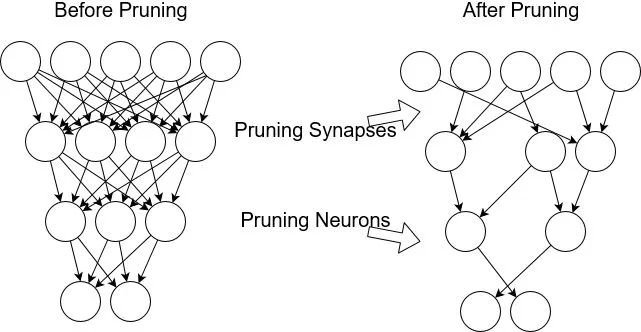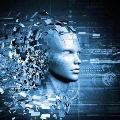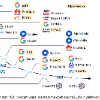参考文献
1. Much more on Deep Learning’s Size Problem.
2. A common example of this is XOR which can theoretically be represented with two hidden neurons but in practice requires using around twenty.
3. Kukačka, Jan, Vladimir Golkov, and Daniel Cremers. 2017. “Regularization for Deep Learning: A Taxonomy.” arXiv [cs.LG]. arXiv. http://arxiv.org/abs/1710.10686.
4. Zhang, Chiyuan, Samy Bengio, Moritz Hardt, Benjamin Recht, and Oriol Vinyals. 2016. “Understanding Deep Learning Requires Rethinking Generalization.” arXiv [cs.LG]. arXiv. http://arxiv.org/abs/1611.03530.
5. Du, Simon S., Jason D. Lee, Haochuan Li, Liwei Wang, and Xiyu Zhai. 2018. “Gradient Descent Finds Global Minima of Deep Neural Networks.” arXiv [cs.LG]. arXiv. Gradient Descent Finds Global Minima of Deep Neural Networks.
6. Haeffele, Benjamin D., and René Vidal. 2017. “Global Optimality in Neural Network Training.” In Proceedings of the IEEE Conference on Computer Vision and Pattern Recognition, 7331–39.
7. And it’s very active. I’ve seen a bunch of papers (that I haven’t read) improving on these types of bounds.
8. Theoretically, though, we at least know that training a 3 neuron neural network is NP-hard. There are similar negative results for other specific tasks and architectures. There might be proof that over-parameterization is necessary and sufficient for successful training. You might be interested in this similar, foundational work.
9. Frankle, Jonathan, Gintare Karolina Dziugaite, Daniel M. Roy, and Michael Carbin. 2019. “Linear Mode Connectivity and the Lottery Ticket Hypothesis.” arXiv [cs.LG]. arXiv. http://arxiv.org/abs/1912.05671.
10. Zhou (2019) explores this idea with more detailed experiments. Liu et al. (2018) found similar results for structured pruning (convolution channels, etc.) instead of weight pruning. They, however, could randomly initialize the structure pruned networks and train them just as well as the un-pruned networks. The difference between these results remains un-explained.
11. Dettmers, Tim, and Luke Zettlemoyer. 2019. “Sparse Networks from Scratch: Faster Training without Losing Performance.” arXiv [cs.LG]. arXiv. http://arxiv.org/abs/1907.04840.
12. Mostafa, Hesham, and Xin Wang. 2019. “Parameter Efficient Training of Deep Convolutional Neural Networks by Dynamic Sparse Reparameterization.” arXiv [cs.LG]. arXiv. Parameter Efficient Training of Deep Convolutional Neural Networks by Dynamic Sparse Reparameterization.
13. Evci, Utku, Trevor Gale, Jacob Menick, Pablo Samuel Castro, and Erich Elsen. 2019. “Rigging the Lottery: Making All Tickets Winners.” arXiv [cs.LG]. arXiv. http://arxiv.org/abs/1911.11134.
14. Lee, Namhoon, Thalaiyasingam Ajanthan, and Philip H. S. Torr. 2018. “SNIP: Single-Shot Network Pruning Based on Connection Sensitivity.” arXiv [cs.CV]. arXiv. http://arxiv.org/abs/1810.02340.
15. More work is being done on deciding whether lottery tickets are general.
16. Note that model compression is not the only path to memory-efficient training. For example, gradient checkpointing lets you trade computation time for memory when computing gradients during backprop.
17. I would say pruning and weight sharing are almost fully explored at this point, while quantization, factorization, and knowledge distillation have the biggest opportunity for improvements.
18. Gale, Trevor, Erich Elsen, and Sara Hooker. 2019. “The State of Sparsity in Deep Neural Networks.” arXiv [cs.LG]. arXiv. http://arxiv.org/abs/1902.09574.
19. What type of regularization induces these 0 weights? It’s not entirely clear. Haeffele and Vidal (2017)6 proved that when a certain class of neural networks achieve a global optimum, the parameters of some sub-network become 0. If training impicitly or explicitly prefers L0 regularized solutions, then the weights will also be sparse.
20. Lan, Zhenzhong, Mingda Chen, Sebastian Goodman, Kevin Gimpel, Piyush Sharma, and Radu Soricut. 2019. “ALBERT: A Lite BERT for Self-Supervised Learning of Language Representations.” arXiv [cs.CL]. arXiv. http://arxiv.org/abs/1909.11942.
21. Here’s a survey. Other examples include QBERT and Bitwise Neural Networks.
22. Note that quantized networks need special hardware to really see gains, which might explain why quantization is less popular than some of the other methods.
23. inFERENCe has some thoughts about this from the Bayesian perspective. In short, flat minima (which may or may not lead to generalization) should have parameters with a low minimum-description length. Another explanation is that networks that are robust to noise generalize better, and round-off error can be thought of as a type of regularization.
24. Rastegari, Mohammad, Vicente Ordonez, Joseph Redmon, and Ali Farhadi. 2016. “XNOR-Net: ImageNet Classification Using Binary Convolutional Neural Networks.” arXiv [cs.CV]. arXiv. http://arxiv.org/abs/1603.05279.
25. Zhou, Shuchang, Zekun Ni, Xinyu Zhou, He Wen, Yuxin Wu, and Yuheng Zou. 2016. “DoReFa-Net: Training Low Bitwidth Convolutional Neural Networks with Low Bitwidth Gradients.” https://www.semanticscholar.org/paper/8b053389eb8c18c61b84d7e59a95cb7e13f205b7.
26. Lin, Xiaofan, Cong Zhao, and Wei Pan. 2017. “Towards Accurate Binary Convolutional Neural Network.” arXiv [cs.LG]. arXiv. http://arxiv.org/abs/1711.11294.
27. Wang, Ziheng, Jeremy Wohlwend, and Tao Lei. 2019. “Structured Pruning of Large Language Models.” arXiv [cs.CL]. arXiv. Structured Pruning of Large Language Models.
28. Denton, Emily, Wojciech Zaremba, Joan Bruna, Yann LeCun, and Rob Fergus. 2014. “Exploiting Linear Structure Within Convolutional Networks for Efficient Evaluation.” arXiv [cs.CV]. arXiv. http://arxiv.org/abs/1404.0736.
29. Hinton, Geoffrey, Oriol Vinyals, and Jeff Dean. 2015. “Distilling the Knowledge in a Neural Network.” arXiv [stat.ML]. arXiv. http://arxiv.org/abs/1503.02531.
30. Kim, Yoon, and Alexander M. Rush. 2016. “Sequence-Level Knowledge Distillation.” arXiv [Inicio - Covarrubias & Cía]. arXiv. Sequence-Level Knowledge Distillation.
31. Furlanello, Tommaso, Zachary C. Lipton, Michael Tschannen, Laurent Itti, and Anima Anandkumar. 2018. “Born Again Neural Networks.” arXiv [stat.ML]. arXiv. http://arxiv.org/abs/1805.04770.
32. Yang, Chenglin, Lingxi Xie, Chi Su, and Alan L. Yuille. 2018. “Snapshot Distillation: Teacher-Student Optimization in One Generation.” https://www.semanticscholar.org/paper/a167d8a4ee261540c2b709dde2d94572c6ea3fc8.
33. Chen, Defang, Jian-Ping Mei, Can Wang, Yan Feng, and Chun Chen. 2019. “Online Knowledge Distillation with Diverse Peers.” arXiv [cs.LG]. arXiv. http://arxiv.org/abs/1912.00350.










